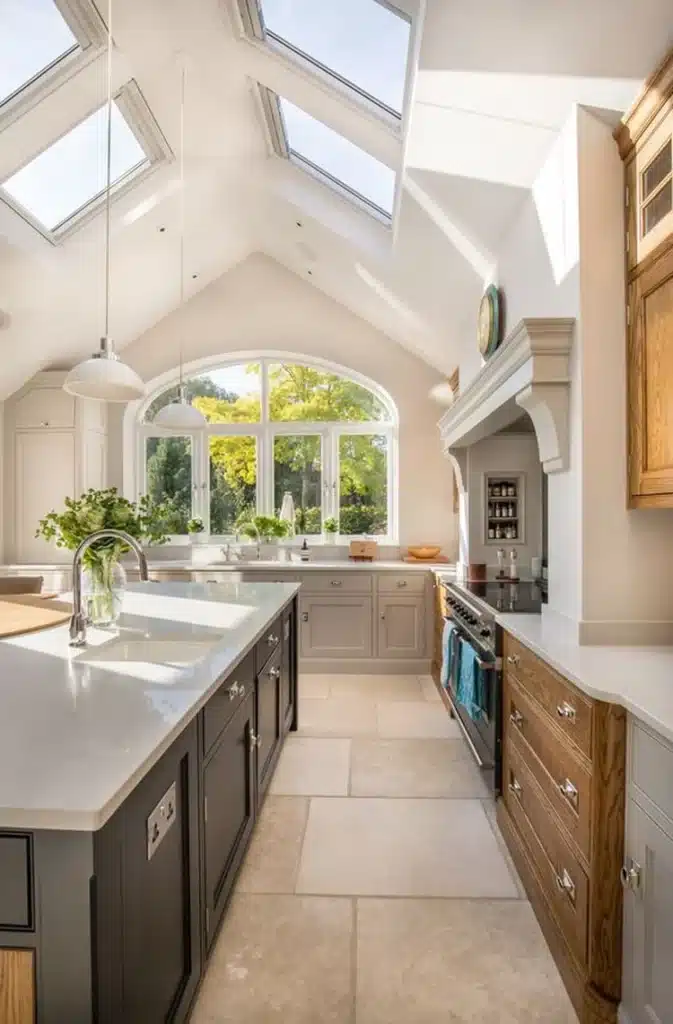Vaulted ceilings blend architectural drama with functional benefits but require careful consideration before implementation. This article explores their definition, types, advantages, challenges, cost implications, and ideal applications, offering practical insights for informed decision-making.
What Are Vaulted Ceilings?
Vaulted ceilings feature an arched or sloped design that creates vertical space by following the roof’s structure or forming a curved shape between walls. Unlike standard flat ceilings, they emphasize height and volume, historically associated with grand structures like cathedrals but now adapted for modern homes to enhance aesthetics and spatial perception.
Types of Vaulted Ceilings
Vaulted ceilings vary in design, each offering unique visual and structural characteristics:
| Type | Description |
|---|---|
| Cathedral | Sloped planes meeting at a central peak, often aligned with the roof structure. |
| Barrel | A semicircular, tunnel-like design resembling the interior of a barrel. |
| Groin | Formed by intersecting barrel vaults, creating angular, geometric patterns. |
| Shed | A single sloped plane, ideal for compact spaces or contemporary designs. |

Advantages of Vaulted Ceilings
- Enhanced Spaciousness : Creates an airy, open feel, making rooms appear larger.
- Improved Natural Light : Allows for taller windows or skylights, boosting daylight exposure.
- Architectural Interest : Adds a focal point that elevates interior design.
- Energy Efficiency Potential : Skylights or high windows can promote passive cooling by releasing warm air.
Challenges and Considerations
- Higher Costs : Structural modifications and specialized labor increase upfront expenses.
- Energy Consumption : Larger volumes require more heating/cooling, raising utility bills.
- Maintenance Complexity : Cleaning and repairs are more challenging due to height and slope.
- Acoustic Issues : Hard surfaces may cause sound reverberation, requiring soft furnishings to dampen echoes.
Cost Factors
- Initial Investment : Typically ranges from 15,000to50,000, depending on room size and materials.
- Long-Term Expenses : Heating/cooling costs may rise by 20–30% compared to standard ceilings.
Ideal Applications
Vaulted ceilings work best in:
- Large, Open Spaces : Living rooms, dining areas, or family rooms.
- Modern Architectures : Homes with minimalist or contemporary designs.
- Avoid Small Rooms : Bathrooms or studies, where coziness is preferred.

Design Tips
- Proportion Matters : Ensure ceiling height does not exceed room width to avoid imbalance.
- Lighting Strategy : Use skylights or wall-mounted fixtures to minimize shadows.
- Acoustic Solutions : Incorporate rugs, curtains, or upholstered furniture to reduce echo.
Frequently Asked Questions (FAQ)
- Are vaulted ceilings suitable for small homes?
Yes, but only in square or rectangular rooms. Avoid complex designs like domes in compact spaces. - How can I reduce energy costs?
Install closed-cell insulation, energy-efficient windows, or operable skylights for passive ventilation. - Can I add a vaulted ceiling to an existing home?
Yes, but consult a structural engineer to assess feasibility and compliance with building codes.
Summary Table
| Aspect | Details |
|---|---|
| Definition | Arched or sloped ceilings creating vertical space, often aligned with the roof. |
| Key Benefits | Increased natural light, spaciousness, architectural appeal. |
| Main Challenges | Higher costs, energy use, maintenance complexity. |
| Best For | Large living areas, modern homes, spaces prioritizing aesthetics. |

Vaulted ceilings offer a blend of elegance and functionality but demand thoughtful planning. By weighing their pros and cons against practical needs, homeowners can determine if this design choice aligns with their goals.






